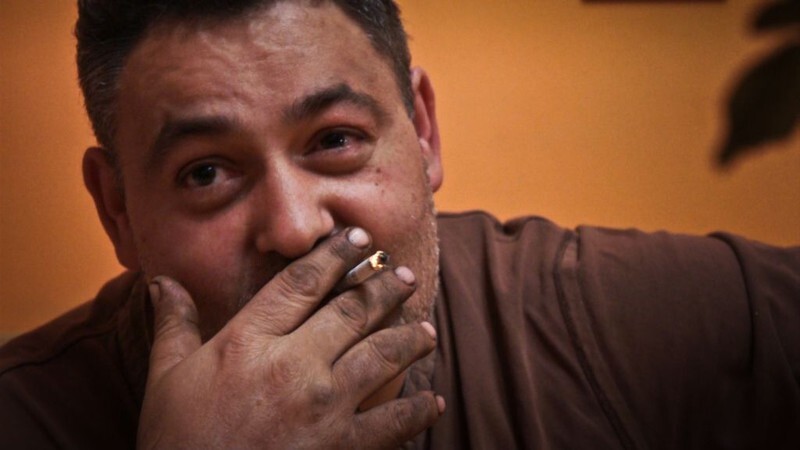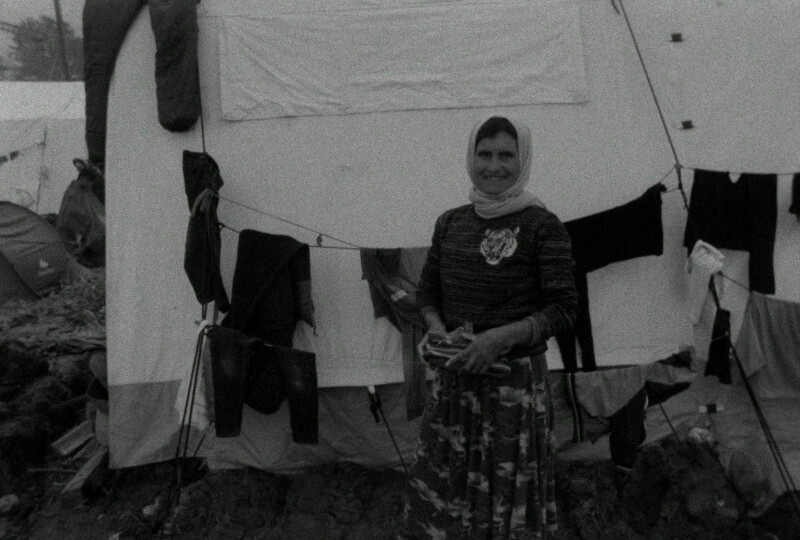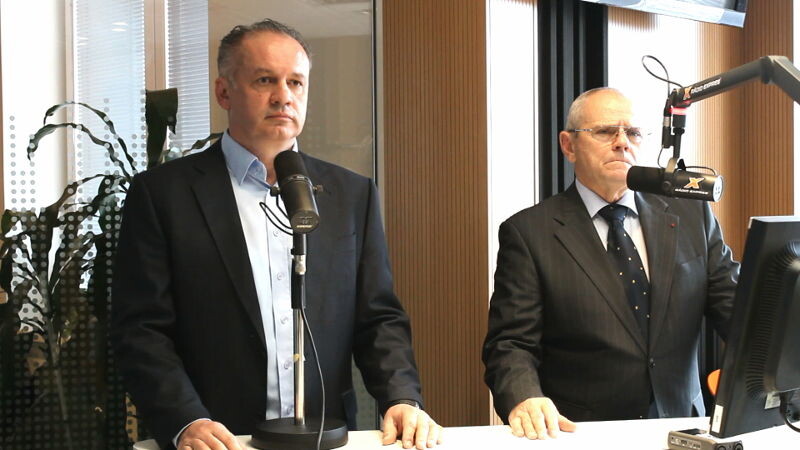Multi-layered Personal Testimony
Documentarian Tomáš Kratochvíl decided to deal with the situation after his divorce in a unique way. He moved to a Roma ghetto in Předlice in the Ústí nad Labem region and made a film about his experience. A personal diary depicting the life of a “gadjo” amongst the Roma community called Czechs Against Czechs also appealed to the jurors of the Czech Joy section at the Jihlava IDFF 2015 who gave him a Special Mention for “challenging social stereotypes and prejudices”. This time the discussion’s participants included historian and director of The Museum of Roma Culture, Jana Horváthová (JH), visual artist Kateřina Šedá (KŠ) who is collaborating with a group of teenagers on an unusual guide to Brno’s Cejl district, and professor Jiří Voráč (JV), Head of the Film and Audiovisual Culture Institute at Masaryk University and a member of this year’s festival jury.
JV: What appealed to me in Czech Against Czechs was the congenial, close and intimate narrative perspective. For many years, I’ve been living in an “excluded” locality thanks to which, as a spectator, I’m able to share the experience shown in the film in all its complexity. Personal experience is always unique, but on the other hand, in many respects, it can hardly be generalised.
JH: It’s not desirable to globalise the term Roma. The term is very varied; it encompasses diverse groups and communities. My approach to the Roma ethnicity is also affected by the fact that I’m also partially of a Roma ethnicity, which opens up a different perspective.
KŠ: I always try to approach the Roma in the same way as the majority. One proof may also be my own new project prepared with a couple of teenagers – an offbeat guide to Brno’s Cejl district which is traditionally seen as a “socially excluded locality”. The project’s aim is to see this locality as if it wasn’t inhabited by the Roma minority. Me personally, I don’t find the fact that the Roma live in the area important.
JH: In terms of the film’s acceptance by the majority, Kratochvíl was lucky in his choice of the protagonists. Jarda and Margita are a very likeable couple, but at the same time they are not so different from an average Roma family, as they may seem. They are not typical in that they don’t have kids, but there are many Roma families who aren’t problematic, who don’t engage in illegal activities, who aren’t different from the majority, but the society doesn’t view them as Roma citizens – just like me and my family. We are unacceptable for the people with the Roma label. We don’t comply with the “typical image”, we defy stereotypical concepts.
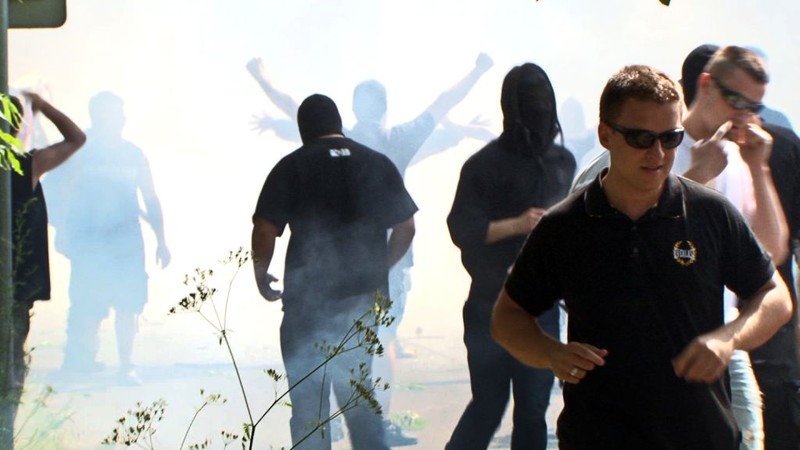
Czechs Against Czechs
JV: In its essence, every narration is selective. So we can also ask, to what extent are the author’s parents or grandparents representative of the majority society – being potentially racist in their views? This film does not represent a sociological sample, but brings a particular and unique story that openly admits the form of a personal diary and absorbs other personal stories, for instance that of the activist Míra Brož. This infuses the film with multiple meanings.
JH: I like when people openly express their opinions and Tomáš Kratochvíl’s film tries to be maximally honest. But perhaps also in view of his age, experience and also the length and pace of the action, I feel that the result doesn’t have the desired effect. Following a very inspiring first thirty minutes, we get bogged down in demonstrations and the substance of the entire co-habitation problem is lost. The author failed to fully use the unique perspective of the situation of the excluded communities to show what their omnipresent frustration and other negative aspects, i.e. also co-habitation problems, stem from. That’s why Kratochvíl can’t propose any solutions and becomes a victim of his own, perhaps naive, concept.
KŠ: It’s actually entirely irrelevant what people he has chosen. It’s the same story as with painters – it’s not about what they’re portraying, but how they’re doing it. I can’t see any problem in the length but in the fact that he spent such a long time in Předlice. The film could be more expressive if he had his family move in with him and lived with them for five years or so, or if he tried to find other tenants to live in the house. I’m not saying that it wouldn’t be interesting as it is, but in my opinion it got stuck somewhere half way.
JV: In my view, the second part, which can be called “about demonstrations” actually multiplies the perspectives and meanings, and opens new topics. For instance, activist Míra Brož, who wants to do good, against all odds. The stubbornness with which he pushes his solutions, can cause more harm than good, and generates tension on the part of those who he wants to protect. In a way, he is a tragic and solitary figure. The second half of the film brings up another part of the director’s personal story: after meeting his partner and founding a family he abandons the voluntary social experiment, thus acknowledging his personal limits. To me this seems like a fair gesture which also indicates that the social solution of the problem lies elsewhere. The director thus rather interestingly challenges his own concept – that could have otherwise seemed somewhat romantic – and similarly also stereotypes and prejudices.
KŠ: However, in my eyes, this multi-layered character of the film is rather to the detriment of the whole work. I can imagine a different form and direction of this concept. I would take the personal topic a bit further. I would populate the house with people and wouldn’t leave it with my camera – it could have been extremely interesting and exciting to watch what would have happened. Logically, this would bring about another surprise – practically anything could happen. But everyone can picture what is happening at a demo. I would rather set out in one direction, going deeper, and not trying to cram too many things into the film. A multi-layered film could also be made within the confines of the house.
JH: Demonstrations might be interesting from the sociological point of view. But the scenes from the demonstrations are useless for someone who is more interested in the contemporary form of co-habitation of ethno-culturally and socially diverse communities and solutions of the related problems. I rather see it as a wasted chance. The director was accepted to an “excluded” community, but instead of providing a more positive view of a truly serious issue, he focused on activism. I expected him to go deeper and uncover the essence of the problem, the mechanism of its reproduction – why they fail to pay the rent, why is the house so desolated, why its inhabitants don’t work or work illegally.
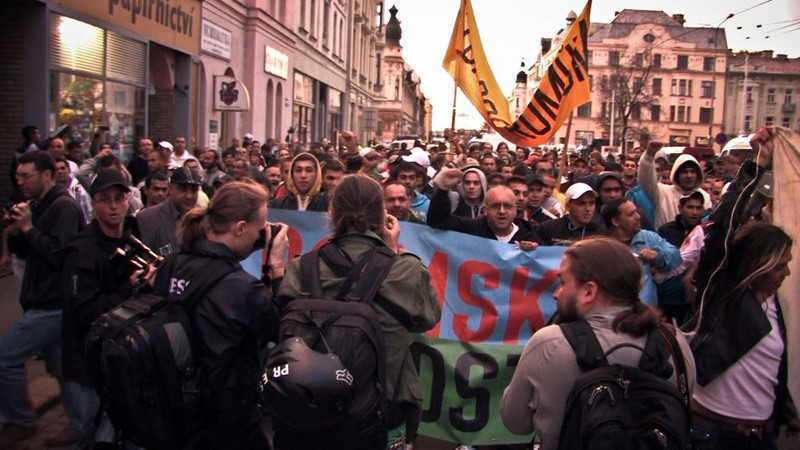
Czechs Against Czechs
JV: It wouldn’t be fair to judge the film as a sociological analysis, I find it more valuable on the psychological level, by presenting this personal, albeit strange experience. The film addresses an extremely serious social topic with elegance and lightness that is, among other things, based on the likeable figure of the narrator, but also on the fact that he openly presents his narration as a personal diary. Czechs Against Czechs is actually a very simple film, which may thus become an effective means of coping prejudices and stereotypes. Such a means has the form of simple questions and their confrontation with a particular experience. Although we can’t consider it a sociological method to ask two bald guys what exactly the Roma have done to their children, but it is very effective to realise that we are perpetuating prejudices without being able to measure them against experience.
JH: And then you might get robbed by a Roma guy, as this happens. It could, of course, have been anyone. All in all, I’m happy that such a film has been made, but I would like it to delve deeper. Its shorter version was shown on TV and the longer cut in cinemas and at festivals, it has hence been shared in the media world. We all know how powerful media are. But they don’t fully use their potential. The media don’t care about the diversity of the Roma communities. Positive reports about the “gypsies” simply don’t fit in, they don’t attract subscribers and won’t boost viewer rates. The public is then surprised when Kratochvíl shows a “non-typical” Roma family, however, being only the tip of the iceberg. There are many such people living among us but you wouldn’t know about them, because they don’t fit in with medially popular stereotypes. It would greatly help to lay all the cards on the table and show what the reality can also look like. A black-and-white concept of the world is as comfortable as the stereotype that Roma receive higher benefits, although it is not possible and would be against the law.
KŠ: Let me give you one illustrative example. I watched the film with my parents and their reactions were predictable. They’re an exception, they concluded. Unfortunately, the film doesn’t say that this not an accident or a sophisticated choice of a couple who was acceptable for the filmmakers. But it’s a pity that this wasn’t communicated in the film, although it remains a question how the film should then be structured to make this message clear.
JV: Kratochvíl’s film is exceptional in that it follows a path different from that of the young and middle generation of documentarians, fostered at FAMU and drawing on the tradition of the so-called “Vachek school”. It seems more like a speculative and ideologically rhetorical vicious cycle. This can serve as a refreshing background for works that have a purposeful and simple concept, clear goal and a specific, empirical track. But it most probably isn’t by accident that Kratochvíl hasn’t graduated from FAMU, but has a degree in humanities that opens up different paths of knowledge.
KŠ: I believe that people tend to choose a personal topic. For instance, Martin Mareček started shooting Auto*Mat because he was dealing with a personal problem. He himself admits that he lived close to the square and his windows were looking onto the very street that is shown in the film. By the way, films of the “Vachek school” also draw on a personal source, and use them at least as a form of inspiration. However, the Czech Journal documentary episodes have lately lost this personal connection, but in general such a personal connection plays a substantial role.
JV: I guess that the variety of options of how to approach the film and which parts can be accentuated for various reasons especially proves the film’s qualities, although the reception may be controversial.
Czechs Against Czechs – trailer

